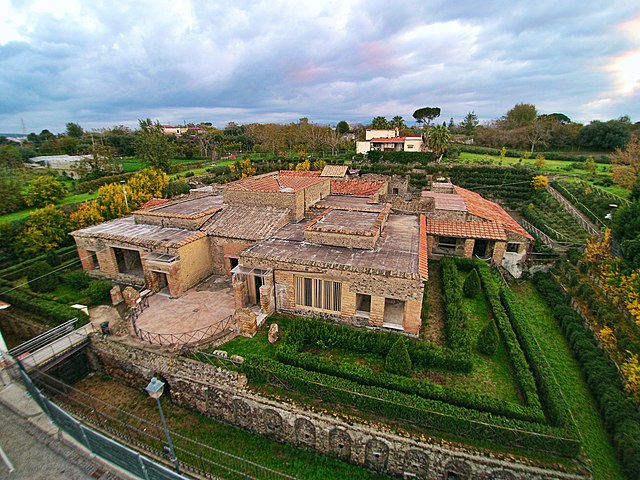A villa is a type of house that was originally an ancient Roman upper class country house. Since its origins in the Roman villa, the idea and function of a villa have evolved considerably. After the fall of the Roman Republic, villas became small farming compounds, which were increasingly fortified in Late Antiquity, sometimes transferred to the Church for reuse as a monastery. Then they gradually re-evolved through the Middle Ages into elegant upper-class country homes. In the early modern period, any comfortable detached house with a garden near a city or town was likely to be described as a villa; most survivals have now been engulfed by suburbia. In modern parlance, "villa" can refer to various types and sizes of residences, ranging from the suburban semi-detached double villa to, in some countries, especially around the Mediterranean, residences of above average size in the countryside.
The Villa Medici in Fiesole with early terraced hillside landscape by Leon Battista Alberti
The Villa Tamminiemi, an Art Nouveau styled villa and house museum in Helsinki, Finland
Villa of the Mysteries in Pompeii seen from above
Model of Fishbourne Roman Palace, a governor's villa on the grandest scale
A semi-detached house is a single family duplex dwelling house that shares one common wall with the next house. The name distinguishes this style of house from detached houses, with no shared walls, and terraced houses, with a shared wall on both sides. Often, semi-detached houses are built in pairs in which each house's layout is a mirror image of the other's.
1950s council built semi-detached PRC houses in Seacroft, Leeds, West Yorkshire
The Paragon in Blackheath
1890s middle-class semis in Blackheath, London
Semi-detached council house in Seacroft, Leeds, West Yorkshire








